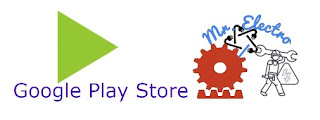This is the Syllabus of NEA level 7 || NEA syllabus level 7 loksewa exam for free quota(khulla quota). This is taken from NEA official website to help others. For more syllabus, you can directly contact us by mail. The NEA syllabus level 5 is given below.
NEA syllabus level 7
1. ELECTRICAL MACHINES
Magnetic circuits: Flux linkage, inductance and energy; magnetic materials and their properties; magnetically induced emf and force; AC operation of magnetic circuits; hysteresis and eddy current losses.
Transformers: Equivalent circuits; losses and efficiency; efficiency curves; energy efficiency; regulation; grounding; transformer connections; parallel operation; overloading capacity; temperature rise; auto-transformer and instrument transformers.
DC Machines: Working principles; types; operating characteristics; armature reaction; losses and efficiency; applications, starting and speed control of DC motors.
Synchronous machines: Working principles; operating characteristics; losses and efficiency; steady state and transient equivalent circuits; excitation system and requirement, governor principle; parallel operation; hunting.
Induction Machines: Working principles; operating characteristics of motoring and generating mode; losses and efficiency; equivalent circuits; starters; speed control and motor selection.
2. GENERATION
Hydroelectric Power Plants: Merits and demerits; site selection; classification; elements of hydroelectric power plant and schematic layouts; different types of water turbines; efficiency curves; selection of water turbines; essential features of hydroelectric alternators; choice of size and number of generating units; auxiliaries in hydroelectric plant; Nepalese power plants, their types, salient features and locations.
Diesel Electric Power Plants: Merits and demerits; application; site selection; elements of a diesel plant and its schematic arrangement; performance and thermal efficiency.
Non conventional method of power generation: Micro hydro, solar photovoltaic, wind and geothermal method of power generation and their importance.
Concept of load curve; load duration curve; mass curve; demand factor; plant factor; utilization factor and plant use factor; significance of load factor and diversity factor in generation planning.
3. POWER ELECTRONICS
Power electronics devices; Diode, power transistors, MOSFET, thyristors, GTO, IGBT
Rectifiers; uncontrolled and controlled rectifiers, operation with inductive loads, harmonic filtering
Inverters; voltage source and current source inverters, harmonic filtering
DC choppers; cyclo-converters; AC voltage controllers
Introduction to HVDC lines; advantages and applications
4. TRANSMISSION AND DISTRIBUTION
Transmission: Choice of voltage; conductor size; insulators used in overhead lines; vibration dampers; conductor configuration; clearances; span lengths; sag-tension calculation; pole/tower types; right of way;







No comments:
Post a Comment
----Please share your opinion with us-----